Pengshui Wujiang Gallery Scenic Area is located in Pengshui Miao and Tujia Autonomous County, Chongqing Municipality. It is a national 4A-level tourist attraction that integrates multiple functions such as sightseeing, leisure and vacation, water entertainment, folk experience, and characteristic catering. The total planned area of the scenic area is 46.64 square kilometers, among which the planned area of the core scenic zone is 9.91 square kilometers, with a forest vegetation coverage rate of 91%.
The Wujiang River here is clear and turquoise, sometimes presenting a calm lake with rippling waves, and sometimes a turbulent current in the canyon. On both banks, the mountains rise in layers, with peculiar peaks facing each other and steep cliffs towering. Waterfalls, springs, jagged rocks, ancient trees, and green vines can be seen everywhere. Every step reveals a new scene, and every corner is as picturesque as a painting, hence enjoying the reputation of "A Thousand Miles of Wujiang River, A Hundred Miles of Gallery". Weng Ruomei, a poet of the Qing Dynasty, once praised it as "Among the magnificent landscapes of Sichuan, this is undoubtedly the best". The main structures in the scenic area include the landmark gate tower, the Nine-Gate Passage, and the Jiuli Palace. There are 2 Chinese-style antique painted boats and 5 modern luxury yachts, providing tourists with a variety of sightseeing options.
History and Culture
Pengshui Wujiang Gallery has a long history and profound cultural accumulation. Since the establishment of the county in the early Han Dynasty, Pengshui has a history of more than 2,000 years and once served as the administrative center of Qianzhong Circuit in the Tang Dynasty. It is a national-level cultural and ecological protection area for the Tujia and Miao peoples in the Wuling Mountain Area (southeastern Chongqing), boasting rich Miao culture, salt and cinnabar culture, Qianzhong culture, red culture, and Wujiang culture. In 2011, it was included in the Third Batch of National Intangible Cultural Heritage Representative Projects, and in 2014, it was included in the Fourth Batch of National Intangible Cultural Heritage Representative Projects (Expanded Project List).
There are many historical relics along the river. For example, the Manwang Cave of the ancient Ba State, built in the Warring States Period, carries the mysterious history of the ancient Ba State; Maan City, the site of the uprising led by Monk Jintou in the Southern Song Dynasty, witnesses the changes of a specific historical period; the hanging burials of the Bo people, as a custom relic of the Bo ethnic group (a minority in southern China) in the Eastern Han Dynasty, are full of mystery; the towpath of the Ba people has a long history, behind which lies a vivid portrayal of the production and life of ancient laborers in the Wujiang River basin. In addition, cultural relics such as "Raging Waves Beating the Shore" and "Zhuling Poetry Niche" are also of great research value.
The scenic area is inhabited by ethnic minorities such as the Miao and Tujia peoples, with rich ethnic customs. Miao singing and dancing, Tujia waving dance, customs like crying marriage and drinking Tujia oil tea have been passed down from generation to generation. Traditional handicrafts such as Xilankapu (Tujia brocade) and batik are unique and charming. There are also ancient Tujia customs of carrying the bride and crying marriage, unique Baogu Lantern Opera, Yang Opera, Mama Lantern, and leaf love songs through which young people in the folk express their love. All these constitute the extremely charming ethnic customs of the local area.
Main Attractions
Mafeng Gorge
Mafeng Gorge is the first gorge of the Wujiang Gallery, connecting the two calm lakes of Wanzu and Lujiao. Shaped like a dumbbell, it has a total length of 8 kilometers. The natural landscape inside the gorge is unique, with numerous natural pictographic rock formations formed by huge boulders.

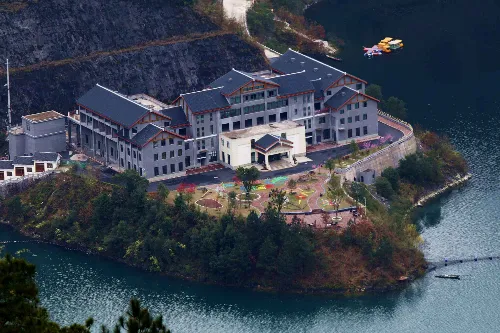
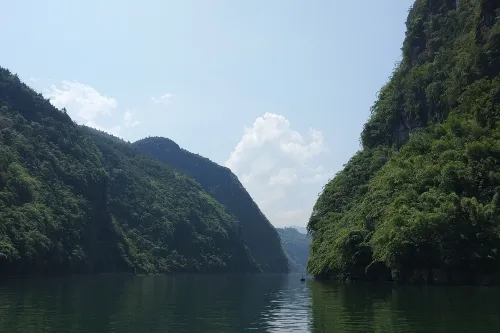
Divine Turtle Stone
Divine Turtle Stone gets its name because its shape is very similar to a turtle.
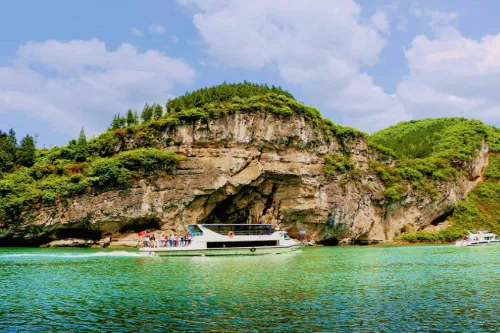
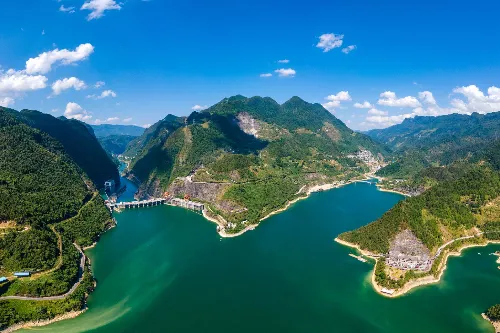
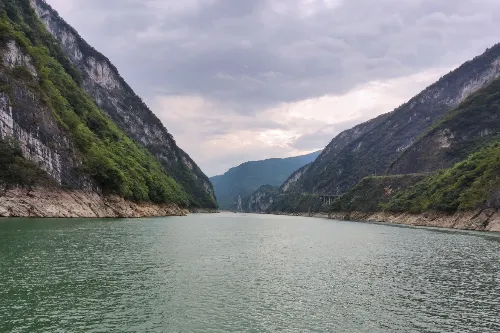
Lion Greeting Guests
It looks like a lion, lying prone by the riverbank, waiting for all the guests who come to visit the Wujiang Gallery.

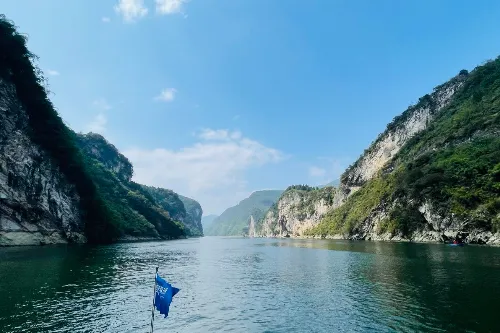
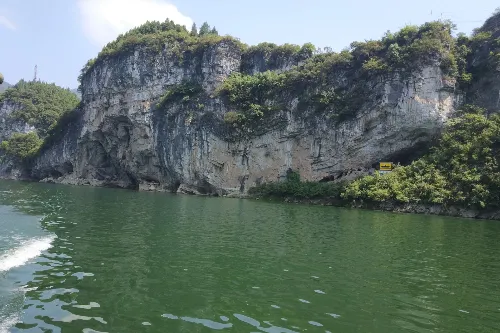
Gongtan Ancient Town
Gongtan Ancient Town currently preserves a 3-kilometer-long stone slab street, more than 150 unique fire-sealing walls, over 200 quiet and ancient quadrangle courtyards, and more than 50 stilted buildings of various shapes. With unique local characteristics, it is a well-preserved and large-scale complex of buildings from the Ming and Qing Dynasties in China.

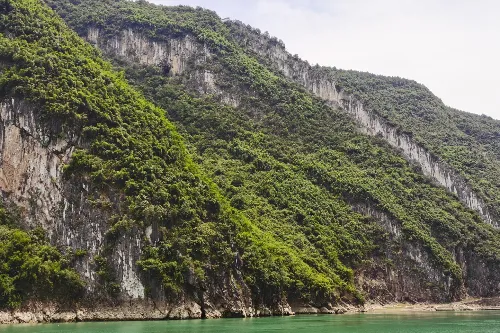
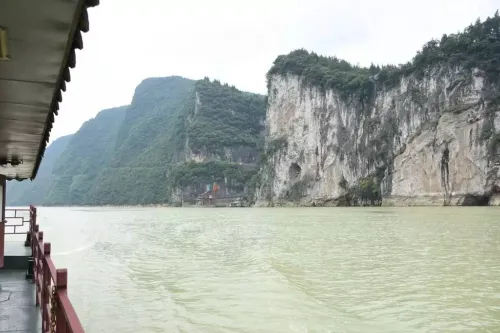
Tour Route
Start from Pengshui County Town, take a taxi (costing 50-80 yuan) and arrive at the Wujiang Gallery Wharf in about half an hour. After purchasing tickets at the Tourist Center, the boat departs around 10:30. Take the cruise ship to visit the attractions in sequence, and the whole journey takes about 2 hours. Finally, you can arrive at Gongtan Ancient Town from Wanzu Town, Pengshui County.
Tour Suggestions
- The best time to visit is spring and autumn. During these seasons, the climate is pleasant and the scenery is beautiful, allowing you to better appreciate the charm of the Wujiang Gallery.
- Arrive at the wharf in advance to buy tickets to avoid delaying your trip during the peak tourist season. If you want to have a deeper understanding of the scenic area's culture, you can choose a cruise ship with a guide service.
- Taste local characteristic foods such as Miao Sour Fish Soup and Tujia Oil Tea to experience the unique food culture.
- You can bring cameras and other equipment to record the beautiful scenery along the way, but please take good care of your personal belongings.
Notes
- When taking the boat, you must follow the instructions of the staff, wear a life jacket, and ensure your safety.
- Take good care of the scenic environment, do not litter randomly, and protect the ecological resources.
- Respect the customs and habits of the local ethnic minorities to avoid unnecessary misunderstandings due to cultural differences.
- Pay attention to the safety of your personal belongings, especially in crowded places and when taking the cruise ship.
Transportation
- You can take a taxi from Pengshui County Town to the Wujiang Gallery Wharf, which takes about half an hour and costs 50-80 yuan.
Opening Hours
The scenic area is open all year round. The cruise ship usually departs around 10:30 in the morning. The specific time may be adjusted due to factors such as seasons and weather, so it is recommended to consult the scenic area in advance.
Tickets
The adult ticket is 100 yuan per person, and the student ticket is 50 yuan per person.
You can search for the official WeChat public account of the scenic area "重庆彭水乌江画廊景区" to get the latest updates.
Online Booking
Click here to jump to the Trip.com ticketing platform for ticket purchase.


